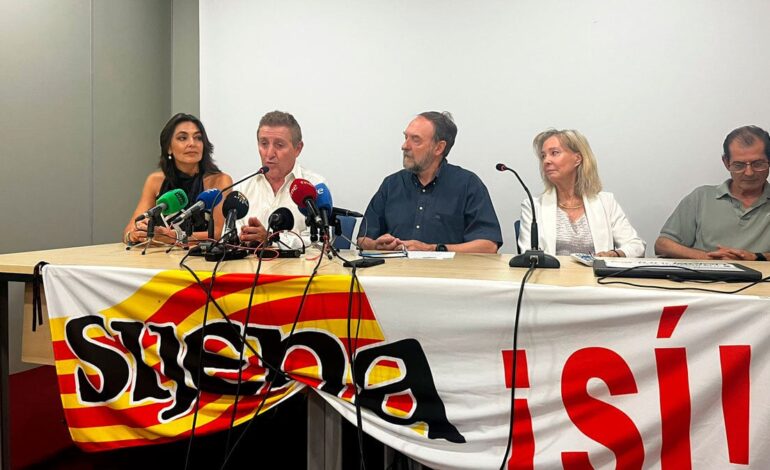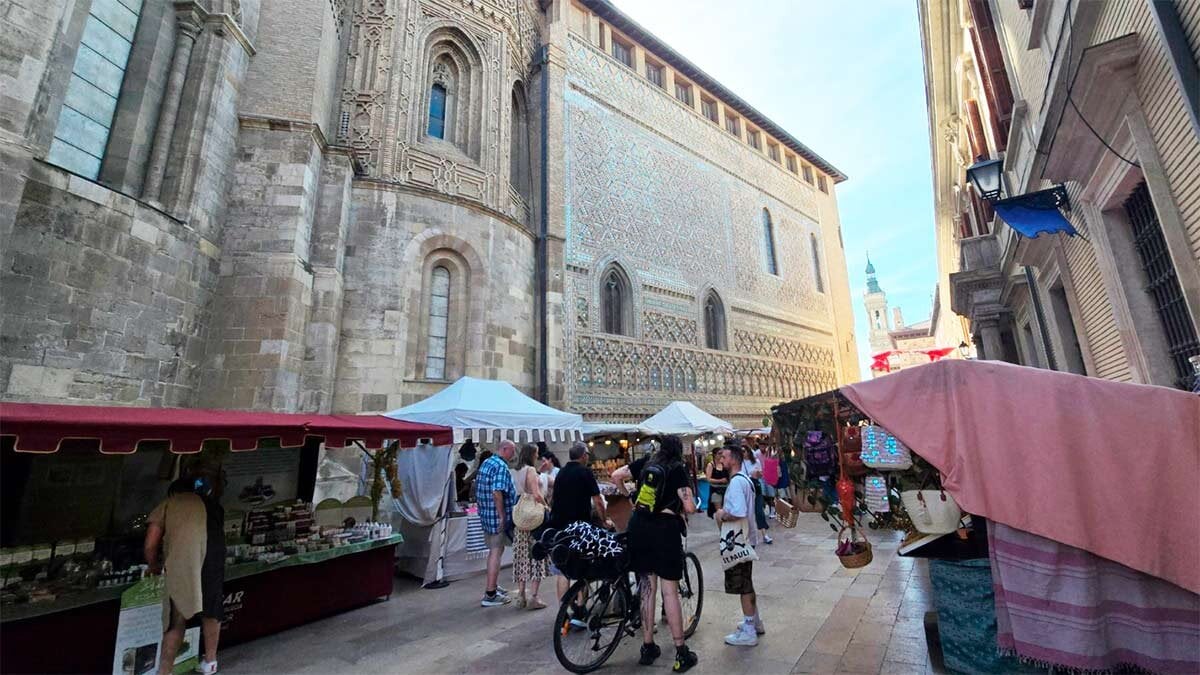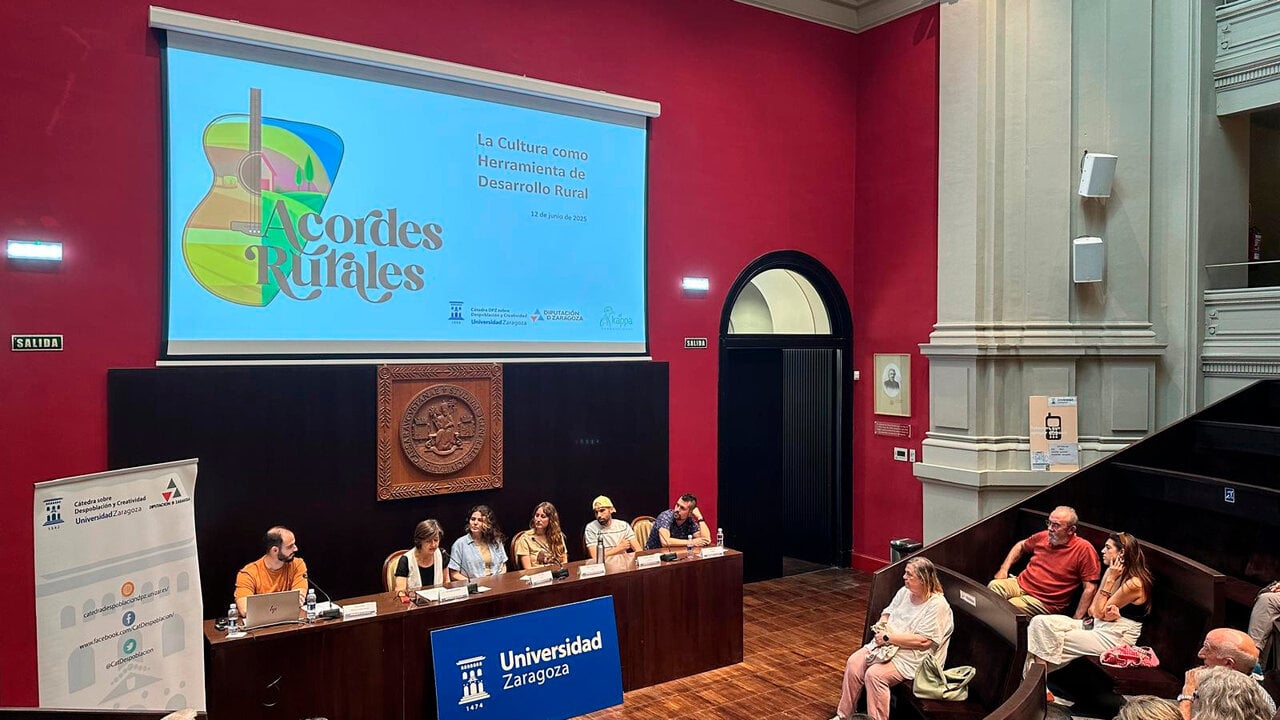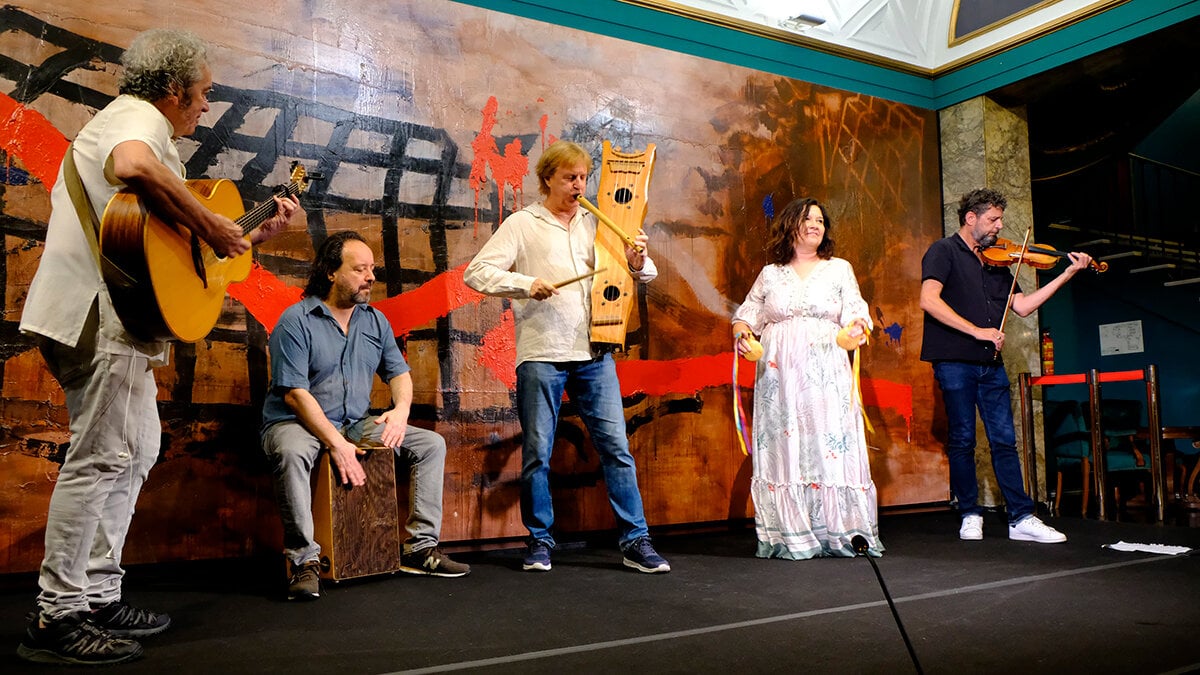
The Sijena Platform will concentrate at the gates of the MNAC if “the dilatory attitude does not change”
On the day when Aragonese technicians have entered the National Museum of Art of Catalonia, MNAC, to do these first studies on the mural paintings that, according to the Supreme Court, will be back in the monastery of Villanueva de Villanueva de Villanueva SIJENA In seven months, the Sijena platform has announced that it will concentrate at the gates of the Catalan Museum if the “dilatory attitude does not change.”
Of course, trusting not having to get to that situation, in the words of the spokesman of the Juan Yzuel platform they have expressed that their first performance will be the elaboration of a manifesto that will send in the coming weeks associations, institutions and different political groups to subscribe it. That manifesto will serve to claim “that right to be executed once and for all the sentence,” said Yzuel.
Also, from the platform they have accused Catalan technicians of “deceiving” experts by not showing the “reality” of the mural paintings of Sijena. “That now new reports are appearing that did not appear in a timely manner when the three MNAC technicians who acted in the trials clearly responded to the judge that they did not see technical difficulty in the possibility of moving them does not seem good to us,” said Yzuel.
In this manifesto they will also address a third point “of vital importance for them”: the political conflict between Catalonia and Aragon generated, in their words, by the MNAC and its three employers (Barcelona City Council, Ministry of Culture and Generalitat). “For years an unnecessary and non -existent political conflict has been promoted when this is a purely administrative judgment where what we have to know is who these paintings are. It was known perfectly from the beginning that these paintings were owned by Aragon. The only thing we want is to come back,” said Yzuel.
In this regard, the former mayor of Sijena and councilor in the current corporation, Alfonso Salaillas, has expressed that this political conflict “would have not occurred if the State had mediated.” “The Supreme Court’s judgment is positively valued because it has cost a lot of time to get here. Now if the State as a employer had mediated and said, ‘hey, the paintings have a property, that property corresponds to Aragon, we as a museum have to return them’ that conflict would not have extended for so much time,” Salas said.
A Master Plan for Sijena
In addition to positively assessing the non -law of law approved in the Cortes on June 26 against the Ocanto Project (a wind project in the vicinity of the Sijena Monastery), from the Sijena platform they have demanded that the Government of Aragon required that “things do their best and have the best possible technicians for the return of the paintings.” And, for this, it was necessary for SIJENA to have a Master Plan.
“We are talking that the monastery of Villanueva de Sijena may be the last monastery in Spain of that level that is in the conditions in which it is and the main thing is to have a principal plan with capital letters. This is a shame because it is being acting in a BIC monument with the protection of BIC to the free will Expressed the restoration expert, Alfonso Monforte.
In this regard, from the platform they have explained that they demand a fiscal plan that goes beyond the monastery of Sijena and that also contemplates a tourist, parking, hospitality plan and, above all, that returns ecclesiastical life to the Cenobio Oscense. “We have a jewel in Aragon and we want when people come also see the essence of the monastery that is ecclesiastical life within it, that it is recovered that the nuns return to occupy those bedrooms,” they have concluded.






